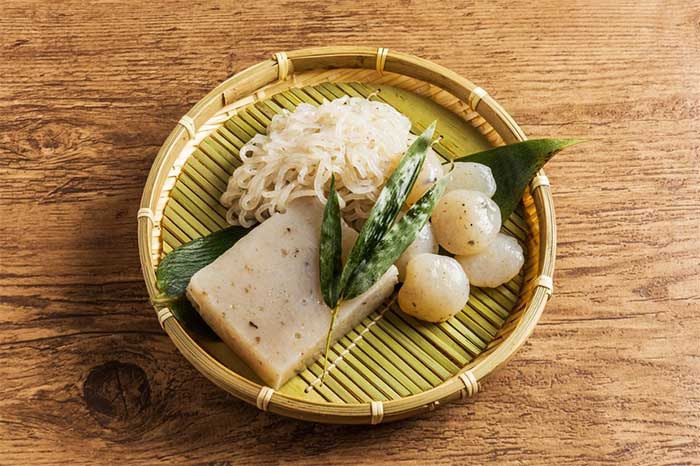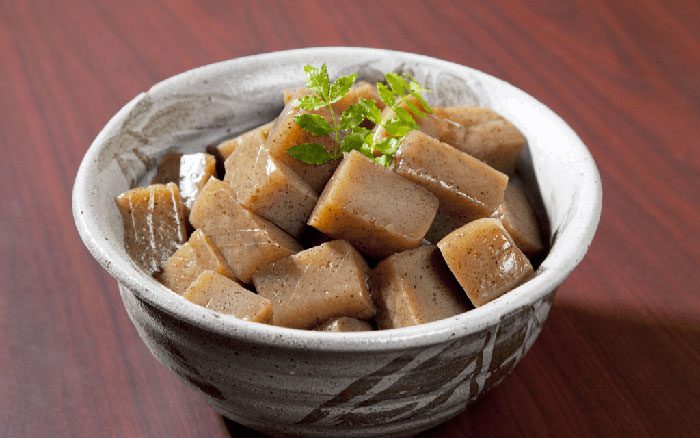This dish has long been incorporated into many Japanese weight loss diets due to its nearly zero calorie content and high fiber content.
You can easily find this food in refrigerators at Japanese supermarkets, typically located near the tofu and natto sections. It comes in various forms, but the most popular is the white noodle form known as shirataki.
In fact, this “Devil’s tongue” dishes are made from Konjac root (also known as elephant yam). This plant family is commonly found in East Asia and Southeast Asia, and is widely used in Japan, Korea, and other countries.

Konjac root processed into various forms.
The name might sound frightening because in English, this plant is commonly referred to as “Devil’s tongue” due to its unique shape, which features a single leaf growing from the stem. This leaf can grow up to 100 cm long, while the stem can reach a maximum diameter of 30 cm.
Many believe that konjac was introduced to Japan in the sixth century as a healing food. In 1864, a cookbook titled “100 Delicious Dishes with Konnyaku” was published there.
Today, it is one of the popular foods in the diets of the Japanese people, often appearing in dishes such as sukiyaki and oden.
The biggest reason why the Japanese love eating dishes made from konjac is due to its immense health benefits. Shirataki noodles made from konjac contain very few calories (about 5 calories per 100 grams), low carbohydrates, gluten-free, and are completely vegan. Their composition includes up to 97% water, with the remaining 3% being glucomannan fiber—an important component that helps in cleansing and bowel movement.

Shirataki noodles made from konjac.
Due to their low fiber and carbohydrate content, shirataki noodles specifically, and konjac products in general, can help control blood sugar levels, lower cholesterol, and are friendly for diabetes and cardiovascular patients. Physically, the noodles expand significantly after entering the stomach, which helps create a feeling of fullness for a longer time, effectively supporting weight loss.
While this food does not contain many nutrients, it is an excellent option for those looking for alternatives in carbohydrate-heavy recipes, and it can easily be combined with various side dishes.

Konjac can also be used in sweet desserts.
Due to its high water content, shirataki has virtually no flavor and will absorb any flavors you cook it with. That’s why you can easily use this type of noodle as a substitute for regular noodles, just make sure to follow the preparation steps, as initially, the smell of the noodles can be somewhat unpleasant.
Additionally, those on a weight loss journey who crave sweets can snack on konjac jelly, which contains less sugar than traditional gelatin-based jellies. These are also added to healthy ingredients like chia seeds and flaxseeds.



















































